Hovering Volumes
The opening in Porto of the Casa da Música endows the Portuguese city with a sculptural landmark that is also the first work of Koolhaas in the Peninsula.
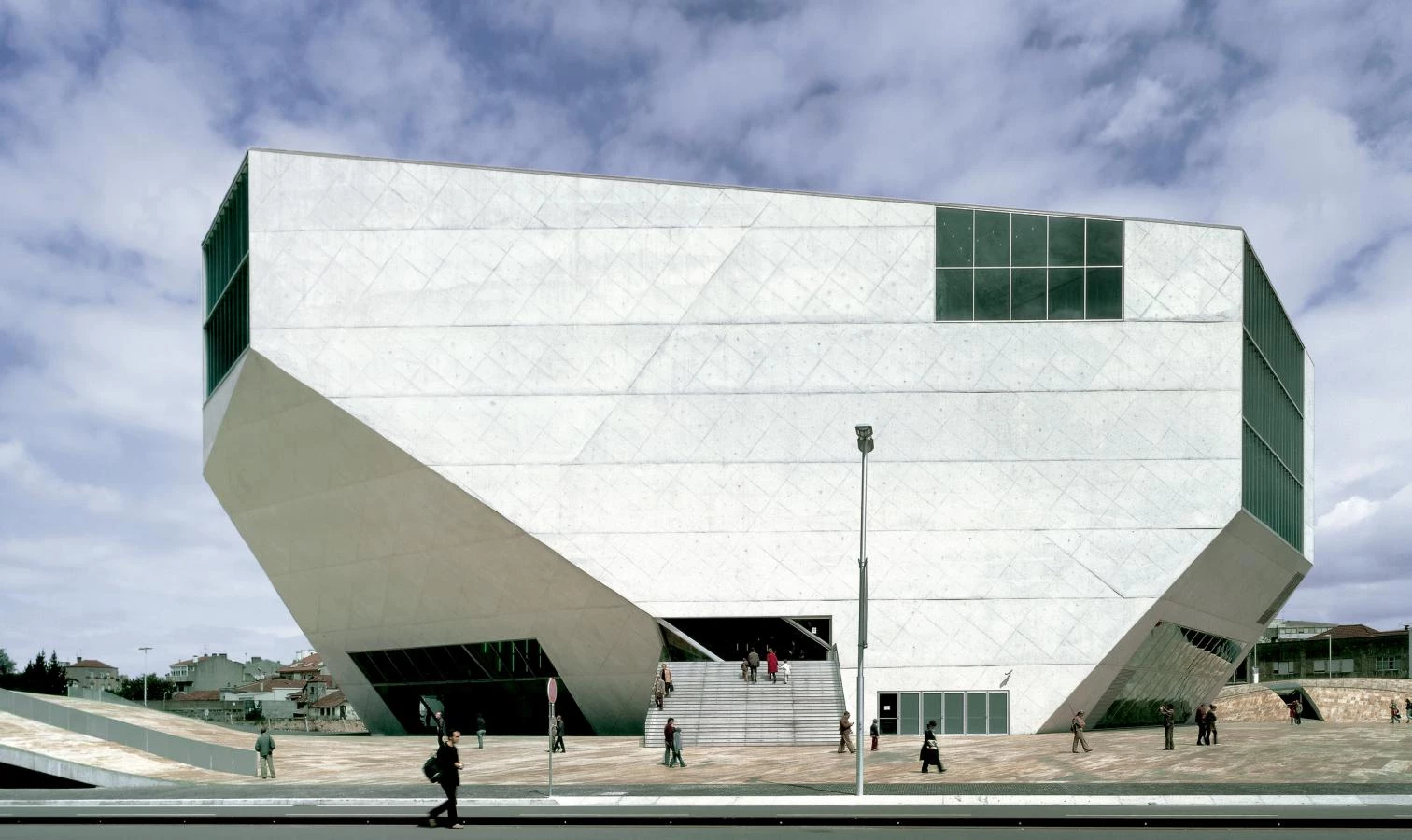
Porto now has an icon. The Casa da Música of Rem Koolhaas will soon appear in tourist brochures and attract the usual flux of architecture-savvy visitors. The enthusiasm for emblematic constructions that the ‘Guggenheim effect’ has awakened in politicians all over the world has made it possible to channel into them huge amounts of money, talent and technical skill. Consequently, symbolic works have become the Formula 1 of architecture, a circuit where the best teams and pilots compete, at the service of spectacle indeed, but also in the benefit of research and innovation. With the carved aerolite of the Casa da Música, peaceful Porto joins the hectic league of cities that use architecture for urban marketing. Some will think that Porto’s universal wine and melancholy beauty exempted it from any need for exceptional constructions and the gymnastic efforts these involve, but it is hard to avoid this toll when cities everywhere capitalize on celebrations to erect buildings that serve to increase their visibility in media and their capacity to attract.
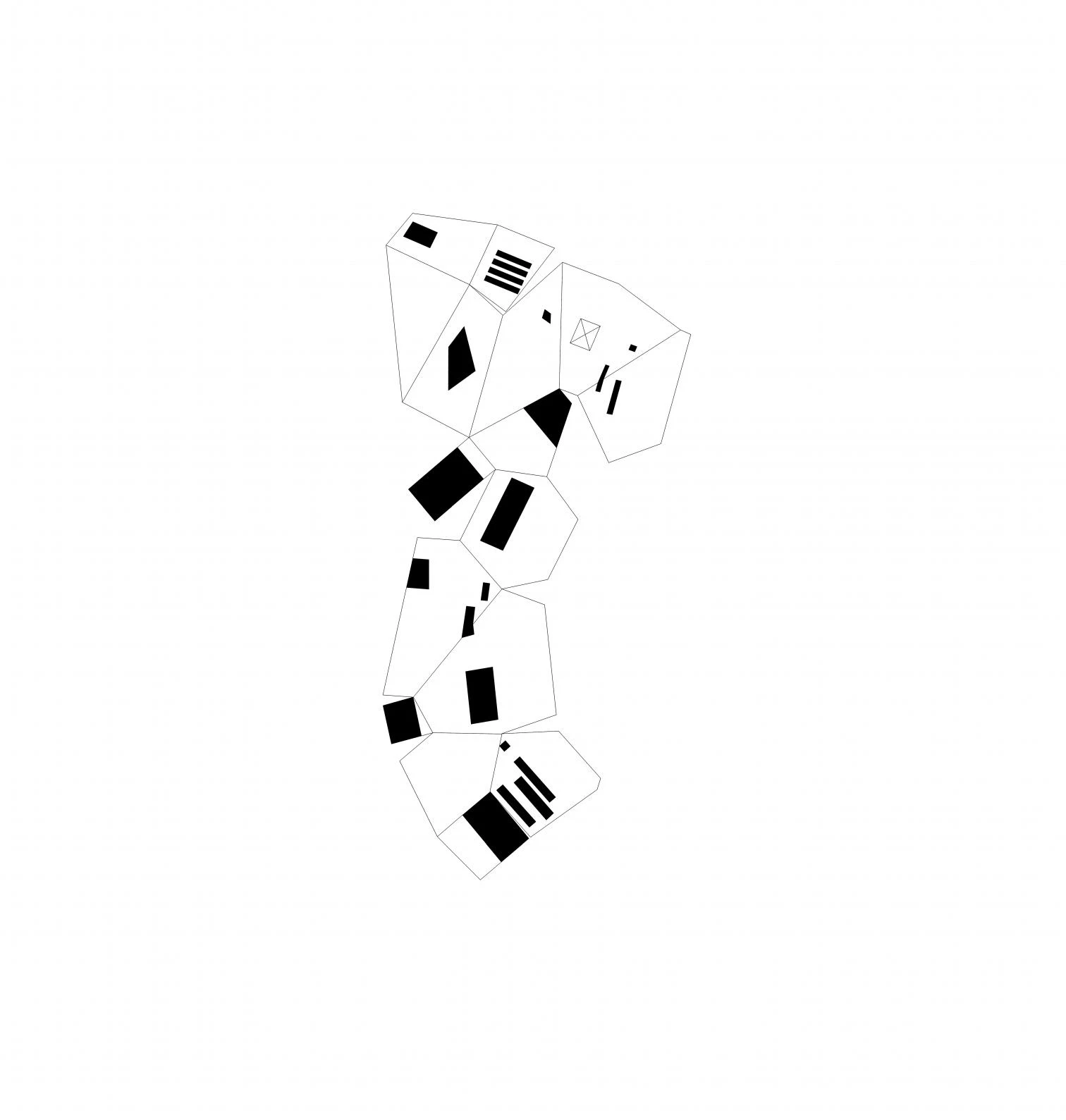
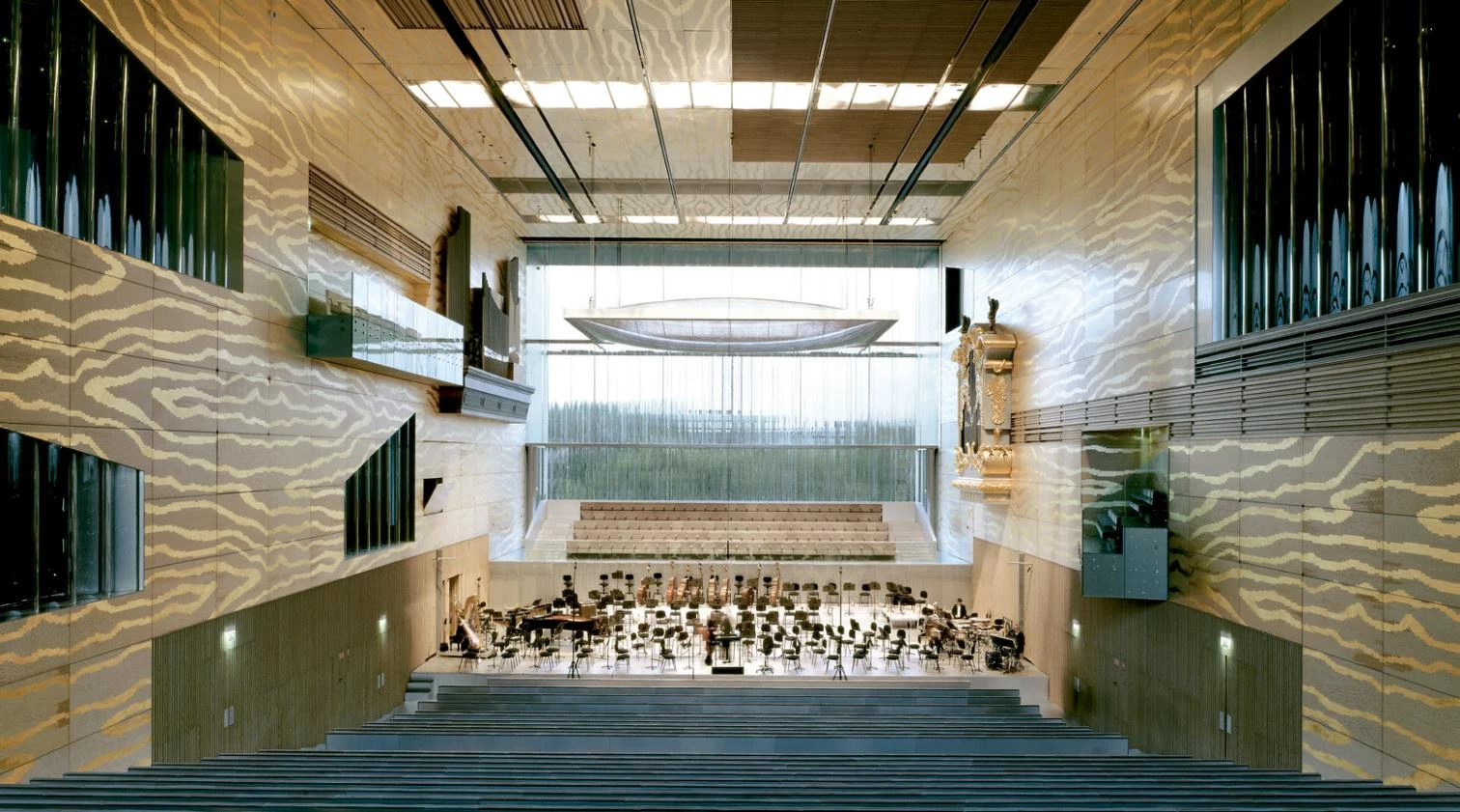

The faceted concrete volume contains a surprisingly prismatic auditorium of classical proportions, and its compact aspect of carved rock contrasts ironically with the enclosure’s origami-like character.
The Portuguese city joined the race in 1999, hurriedly organizing a competition for a concert hall that would have to be up in time for its turn, in 2001, as Europe’ culture capital. The deadlines were ridiculous, no doubt; stubborn reality has moved the date of completion to 2005, after a host of contractual, technical, and financial vicissitudes, besides a parade of Casa da Música presidents that has seen five successive persons at the helm of the institution. But contestants were given only three weeks to draw up their projects, so most of those called in backed out, and in the end only three submitted proposals: the New York-based Argentine Rafael Viñoly, the French Dominique Perrault, and the Dutch Rem Koolhaas. The jury, which included the Porto architect Eduardo Souto de Moura, chose the project of Koolhaas, which was originally designed for a house named Y2K because of the owner’s obsession with the turn of the millennium, and with the haste imposed by the competition was recycled as a concert hall by multiplying its domestic scale to the size of a public building. It is this faceted object that now opens, without significant modifications of its exterior morphology but with major changes in the labyrinthian interiors that unfold between the grand hall and the perimeter, and with the radical transformation that constructing it in concrete has involved, as against the glazed enclosure of the competition entry, where echoes of the likewise crystalline library of Seattle were better perceived.
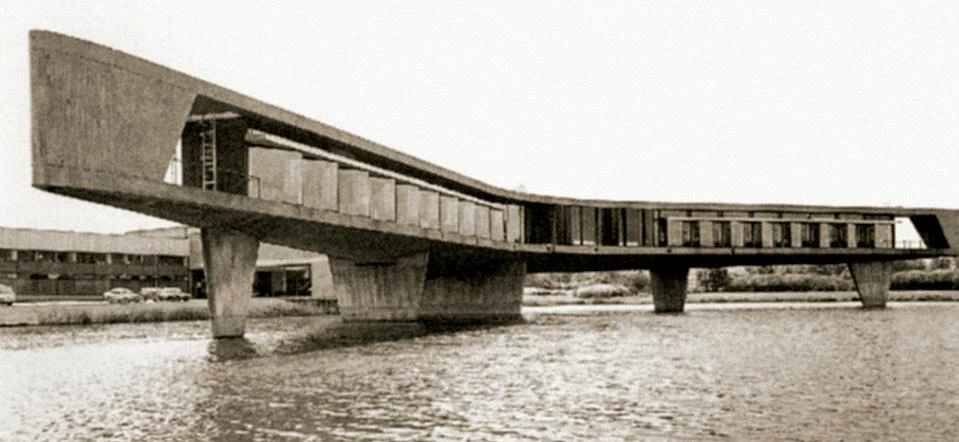
The hovering concrete of Koolhaas, which in the Portuguese-speaking world evokes the heroic modernity of Brazil, has also Dutch roots in the work of Maaskant (left), whose echoes are heard in that of Hadid (below).
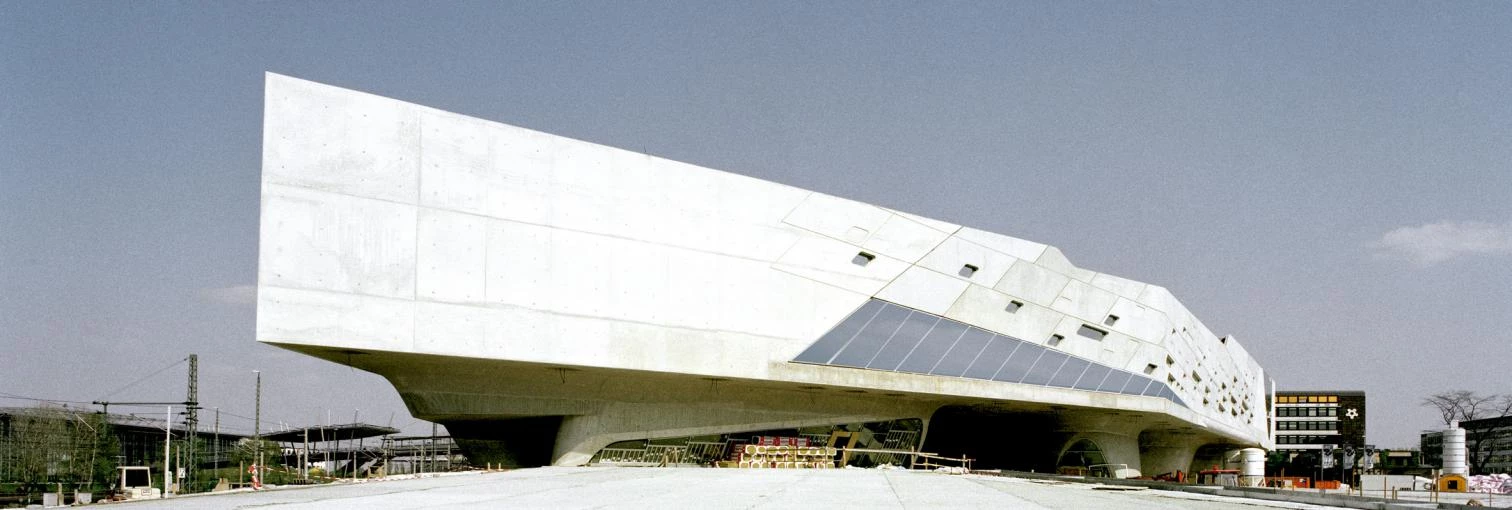
The exact concrete shape of Koolhaas, carved like a precious stone and folded like an origami cardboard, is at once solid and superficial: an arbitrary volume of angular geometries where the regular prisms of the essential uses are dug out, among which the main hall for 1,200 spectators, with the usual ‘shoebox’ shape preferred by acoustics specialists, and with the proportions of Vienna’s Musikverein; and a lamina that folds to define a starchy profile, whose continuity as a cut-out is emphasized by the openings delimited by edges and by the prolongation of the formwork patterns between adjacent sides. This at once stone and paper character is an adequate material oxymoron for a paradoxical project where everything is a surprise when seen up close: the pressed skin makes one think of a Cartesian and functional interior, but there is nothing as turbulent as the intricate routes, dizzying stairs, and remote redoubts that are accommodated in the colossal poché between hall and facade, and nothing as steep as the main staircase, which spills out generously in a way that tricks one into to climbing it; the monolithic gray of the concrete suggests severe, monochrome spaces, which are later contradicted by the green sponge of the cybermusic zone or the pink rubber of the classroom, the golden streaks of the wood surfaces of the auditorium or the collage of tiles in the VIP room, the aluminum perforated by fluorescent lights or the undulating glass panes that make the windows double as screens; and the inclined planes of the suspended volumes seem to support the slopes of the halls, if we let ourselves be guided by predecessors as notorious as Melnikov’s workers’ club or Stirling’s engineering faculty, and yet this is again an erroneous hypothesis; as wrong in the end as the daytime perception of a hermetic piece that night transforms into a lantern of festive colors.

The Casa da Música recalls the sculptural expressionism of the sixties, which through architects like the Dutch Bakema (right) still influences compatriots like the members of the Mecanoo team (below).
Designed by Ove Arup with the Portuguese engineering firm AFA – which also took part in Souto de Moura’s stadium in Braga –, the complex structure unfolds with diagonal legs to prevent the cantilevered volume of the auditorium from turning over, and this gives rise to diagrams resembling Mazinger Z or a lunar module. From this to the way the building refuses to rise over the pavement – rendered in the traditional Portuguese way of small setts, but replacing calcareous stone with dark granite – designed by Siza and Souto de Moura for the area surrounding the nearest subway entrance, in order to spread its own scenographic carpet of slabs of honey-colored travertine, everything in the work of Koolhaas is subjected to the dictates of his exigent autonomy. It is precisely this autonomy that leads to the ultimate and most violent paradox, that coming from the architect’s heated protests over the construction on adjacent land of a bank office that is as autonomous and indifferent to urban context as his own building, exciting if perceived with the background hum of the usual city, but lost in a cacophony of gestures if repeated. What would the Pompidou be without the placidness of the Marais, or the Sydney Opera House without the horizontal silence of the bay? But what can happen to an emblematic work if screams surround it is something we can already see in Bilbao, whose eddy of titanium loses force with every new construction that in Abandoibarra replaces the unanimous spread of containers and train tracks. The return of the sculptural expressionism of the 1960s – from the mega-structural colossalism of the recently deceased Kenzo Tange or Clorindo Testa to the brutalism of Corbusian roots of Denys Lasdun or Claude Parent, passing through the inhabited sculptures of André Bloc or Frederick Kiesler – arouses in the Portuguese-speaking world the inevitable memory of the great Brazilian period that stretches to the titanic concretes of Lina Bo Bardi or Paulo Mendes da Rocha.

Nevertheless, this Porto work can be said to have stronger Dutch references. Very specifically it speaks of the legacy of H.A. Maaskant – the award that carries that name happens to have fallen upon Koolhaas in 1986, and the relation between one and the other is closer than can be explained here. It also speaks of Jacob Bakema, whose dynamic constructions (extended in other directions by masters who were his contemporaries, such as Nervi or Saarinen) still inspire disciples of Koolhaas like Zaha Hadid, and younger Dutch architects like the members of Mecanoo, who recently won a Lérida competition with an intelligent aggiornamento of the main lecture hall at Delft’s Technical University, where they studied and now teach. In the end stubbornly Corbusian in the truest sense of the term, Koolhaas has in Porto completed a perverse tribute to the French-Swiss master, who is honored in the brutal elegance of concrete in daylight and offended in the immaterial and coloristic scenography of the auditorium at night. As in the nervous promenade of the Berlin embassy, which bounces in zigzag off the walls of the cube to subordinate the necessary workspaces to the fickle caprice of the itinerary, the Dutch architect has put the mechanical complexity of a stopped clock in the hypnotic container of elementary geometry. It is both a serious game calling for silence and a risky pirouette that demands the immobile complicity of the surrounding world. Let us lie in wait, and perhaps in vain.
[+][+][+]






